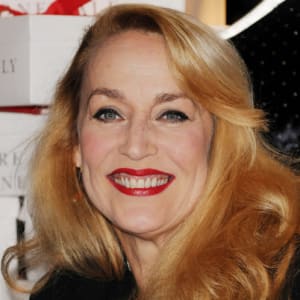
Edward Gorey
Edward Gorey was an American illustrator best known for his cartoons of Edwardian children coming to macabre ends. He work can be seen in the animated credits of PBS’ Masterpiece Mystery.
Synopsis
Born on February 22, 1925 in Chicago, Illinois, Edward Gorey attended Harvard University before moving to New York City, where he landed a job in the art department of book publisher Doubleday. As an illustrator, Gorey developed a quirky, unique and macabre style that was a large influence on the work of artists like Tim Burton. After publishing his first work, 1953's Unstrung Harp, he gained a local following, and his popularity continued to grow. Other independent works include The Doubtful Guest (1957), The Hapless Child (1961), The Gashlycrumb Tinies (1963) and The Gilded Bat (1966). Gorey also illustrated numerous works by other writers, including literary greats H.G. Wells, T.S. Eliot, Charles Dickens, Lewis Carroll and Virginia Woolf. In 1978, he won a Tony Award for costume design on the Broadway production of Dracula. His work began even more widely known in 1980 with the premiere of the PBS series Mystery!, the intro of which boasted his illustrations. Gorey died on April 15, 2000, in Hyannis, Massachusetts.
Early Years
Born on February 22, 1925, in Chicago, Illinois, Edward St. John Gorey was a designer, writer and illustrator known for his unique artistic style, which blended elements of the macabre with humor and whimsy. He taught himself how to read at an early age and two books of his favorites from this time, Dracula and Alice in Wonderland, left a lasting impression on him.
At Chicago's Francis W. Parker School, Gorey discovered his passion for art. He even took some courses at the Chicago Institute of Art in 1942 after graduating in 1942. That same year, however, Gorey soon found his life headed in a new direction. He was drafted into the U.S. Army. The young soldier didn't see any action during World War II, spending much of his time as a clerk at Utah's Dugway Proving Ground.
Not long after finishing his military service, Gorey enrolled Harvard University in Cambridge, Massachusetts.There he befriended writer Frank O'Hara. Gorey also became part of The Poets' Theatre in Cambridge where he served as a designer. In 1950, he completed his studies at Harvard, earning his bachelor's degree in French literature.
Commercial Success
In 1953, Gorey moved to New York City and found work as an illustrator for the book-publishing company Doubleday. He created art for Doubleday's Anchor Books imprint using his now famous pen-and-ink illustration style for book covers. Around the same time he started at Doubleday, Gorey, who had been experimenting for some time with writing in addition to illustrating, published first independent work, The Unstrung Harp (1953).
Following the publication of Unstrung Harp, Gorey began to gain a local following. His popularity continued to grow thereafter due to the release of additional works, including The Doubtful Guest (1957), his first children's book; The Hapless Child (1961); his 1963 abecedarian book The Gashlycrumb Tinies; The Gilded Bat (1966); and The Deranged Cousins: or, Whatever (1969), as well as his numerous and acclaimed collaborations.
Gorey's book-illustration credits from this period include two books by famed author Edward Lear, including 1969's The Dong with a Luminous Nose, as well as the works of H.G. Wells, T.S. Eliot Samuel Beckett, John Updike, Charles Dickens, Lewis Carroll, Edmund Wilson, Virginia Woolf and John Bellairs. By the early 1960s, Gorey had developed a reputation for his dark but humorous style. His drawings, usually of ghoulish, beady-eyed characters, often depicted macabre situations or settings, but with comic undertones.
Gorey's success continued into the 1970s and 1980s, when his focus shifted more heavily toward adult works. His releases during this time include the anthologies Amphigorey (1972) and Amphigorey Too (1975)—which inspired the 1978 musical stage adaptation, Gorey Stories—and 1983's Amphigorey Also. Additionally, Gorey won a Tony Award for costume design in 1978, for his work on the 1977 Broadway production of Dracula.
Gorey's work began even more widely known in 1980 following the premiere of the PBS series Mystery!, which used animated versions of his illustrations in its opening sequence. His art remains synonymous with the series, now known as Masterpiece Mystery, to this day.
Death and Legacy
Gorey spent the later part of his life living and working on Cape Cod in Massachusetts. There he continued to create such unusual works as The Haunted Tea-Cosy (1998). Gorey also became involved in the local theater scene and collaborated with the Provincetown Theater Company on several productions in the late 1980s.
Edward Gorey died on April 15, 2000, at Cape Cod Hospital in Hyannis, Massachusetts. At the time of his death, Gorey had published more than 100 independent works and illustrated countless others. He had several books published posthumously, including Ascending Peculiarity: Edward Gorey on Edward Gorey (2001) and Amphigorey Again (2006).
Gorey's work continues to delight and fascinate people around the world. His art has been featured in several exhibitions, most recently "'E' is for Elephants: The Etchings of Edward Gorey" at the University of Massachusetts. His Cape Cod home is now open to the public as the Edward Gorey House. There visitors can learn more about this unique and influential artist.
A devoted friend of animals during his lifetime, Gorey continues to support the organizations that champion animal welfare through the Edward Gorey Charitable Trust.




